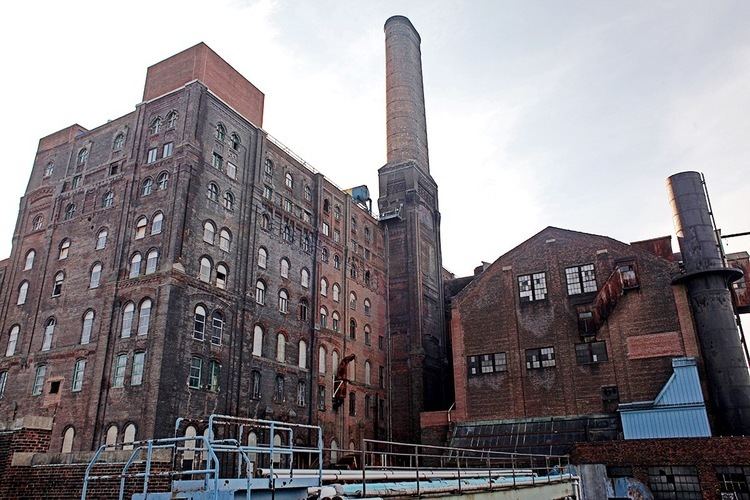 | ||
Inside the domino sugar refinery in williamsburg brooklyn
The Domino Sugar Refinery is a former refinery in the neighborhood of Williamsburg in Brooklyn, New York City. It was the original refinery of the American Sugar Refining Company, which produced Domino brand sugar. The current complex dates from 1882, when it was the largest sugar refinery in the world. Refining operations stopped in 2004, and as of 2012 the property is slated for multi-use development. Several of the buildings in the complex were given landmark status in 2007.
Contents
- Inside the domino sugar refinery in williamsburg brooklyn
- Domino sugar refinery chalmette la 2005
- Refinery
- Redevelopment plans
- References
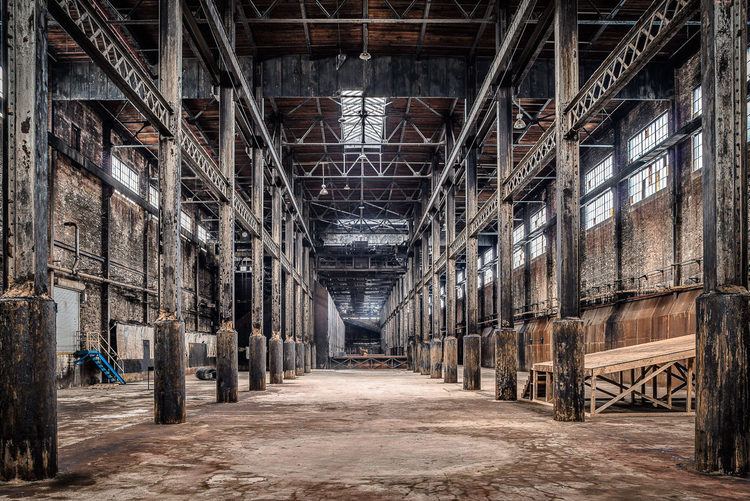
Domino sugar refinery chalmette la 2005
Refinery
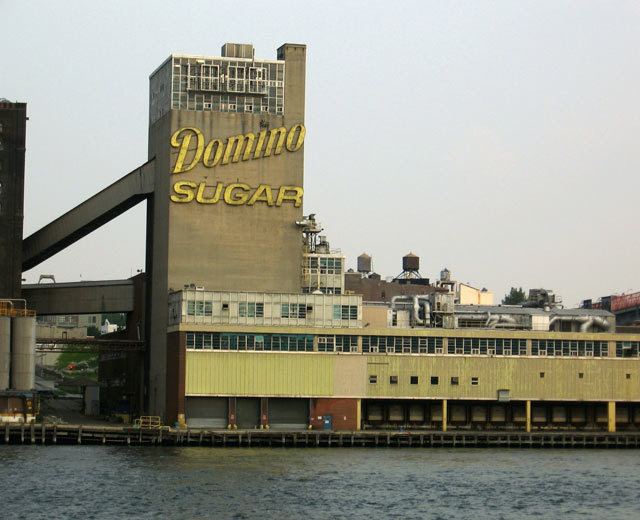
The original refinery was built in 1856, and by 1870 it processed more than half of the sugar used in the United States. The Havemeyer family established their first sugar refinery on Vandam Street in Manhattan at the turn of the nineteenth century. Frederick C. Havemeyer Jr. (1807-1891) expanded the business in 1857 after he established the longstanding South 3rd Street factory on the Williamsburg waterfront. His son, Henry Havemeyer (1847-1907), named the company Domino’s Sugar in the early 1900s. Ships delivered sugar cane from across the world to the Domino Sugar Plant in Brooklyn, which was initially called the American Sugar Refinery Company. Several other factories followed, which created the greatest center of sugar refining in the world at that point in time. By 1870, more than half of the sugar consumed in the entire country was refined there. The largest of all plants is that founded in 1858 by Frederick C. Havemeyer, and now famous as the Havemeyers & Elde Refinery. The business was so successful that in May 1896, American Sugar became one of the original twelve companies in the Dow Jones Industrial Average. A fire in 1882 caused the plant to be completely rebuilt in brick and stone, at least 10 stories high. Those buildings remain, albeit with some alterations made over the years.
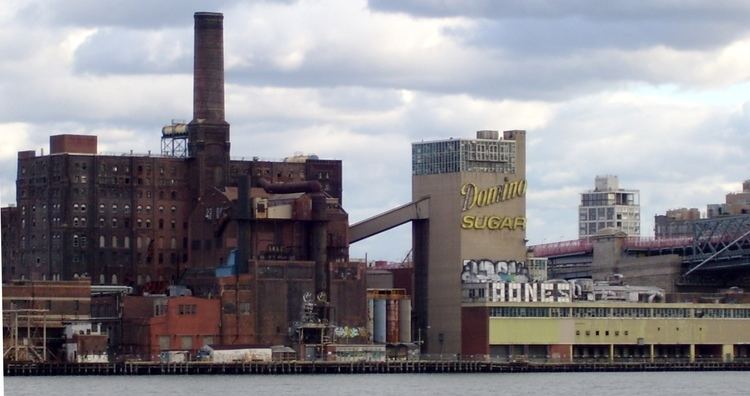
In 1917, while producing sugar for the Allies, an explosion destroyed part of the plant, killing several workers. A crowd of more than 15,000 people gathered to watch the plant burn. There was serious concern that the explosion was the work of German agents.
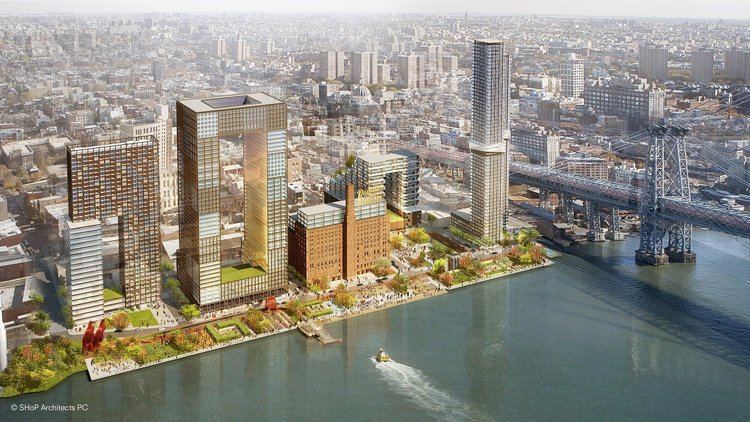
The refinery was the site of one of New York City's longest labor strikes in history. The strike started in June 1999, with over 250 workers protesting wages and working conditions for twenty months. The strike ended in February 2001.

The refinery stopped operating in 2004, after running for 148 years. Over 225 workers were laid off as a result. Three of the buildings were given landmark status by the Landmarks Preservation Commission in 2007: the Pan, Filter and Finishing House. In 2010, a developer's plan to convert the site to residential use received support from the New York City Council.
Redevelopment plans

The 11-acre site was purchased by CPC Resources, the for-profit arm of Community Preservation Corporation, and Brooklyn developer Isaac Katan in 2010. CPC’s plan for the site included a high-rise building with 2,200 apartments. 660 apartments would be set aside or designated as affordable housing. The site's plan also included two 34-story buildings.
In 2012, CPC defaulted on its development project for the Domino Sugar Factory. The site was then purchased by the real estate urban development company Two Trees Management for over $180 million. Two Trees submitted a new design plan for the site in 2013. Two Trees is still setting aside 660 out of the 2,200 apartments for affordable housing. The plan proposes buildings that would reach over 50 stories, which is around the borough’s highest buildings.
A new plan has since been approved for the Domino Sugar Factory, led by Two Trees. The plan replaces a city-approved 2010 plan with a new proposal that adds 60% more publicly accessible open space on a new street grid; provides for a 24/7 mix of creative office space, market-rate and affordable housing, neighborhood retail, and community facilities; and is an innovative form of open architecture that connects the existing neighborhood to the new 0.25 mi (400 m) waterfront. In March 2014, plans for the $1.5 billion redevelopment of the old Domino Sugar refinery on the Brooklyn waterfront were approved by the City Planning Commission. It signed off on the proposal after the de Blasio administration struck a deal with Two Trees Management to include more affordable housing units. That deal requires Two Trees to include 700 below-market-rate units — which is 40 more than what was originally offered and 260 more than CPC. In exchange, Two Trees gets to build its towers of up to 55 stories.
From May through July 2014, artist Kara Walker exhibited her first sculpture, a monumental piece entitled A Subtlety, or the Marvelous Sugar Baby, an Homage to the unpaid and overworked Artisans who have refined our Sweet tastes from the cane fields to the Kitchens of the New World on the Occasion of the demolition of the Domino Sugar Refining Plan, at the refinery. The massive work was commissioned by Creative Time. The exhibition consisted of a giant female sphinx, measuring approximately 80-feet long by 40-feet high, and several life-size childlike figures, dubbed attendants. The sphinx was made by covering a polystyrene core with machine-cut blocks of white sugar, which were then further cut by hand and smoothed with a sugar slurry. Domino Foods donated 80 tons of sugar for Walker's piece. The smaller figures were cast from boiled sugar (similar to hard candy) and had a dark amber or black coloring. The attendants were modeled after some figurines that Walker had purchased on amazon.com.
After the closure of the exhibition, the refinery was to be demolished, as had been planned before the show. In fall 2014, demolition of the structure commenced. In February 2017, the developers of the redevelopment project opened a housing lottery for the 104 apartments in the under-construction apartment building, which garnered 87,000 applicants (about 837 for every apartment).
